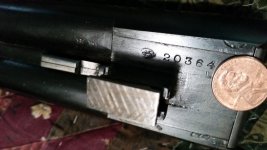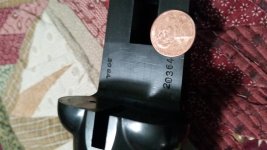DWalt
Member
That's not an indication of chamber length. The chamber length accommodates a fired shell with the crimp open. Measure a 2-3/4" loaded 20 gauge shell and you'll see it's only 2-1/4" long. I was thinking 16 Ga when I mentioned 2-9/16". I think early 20 gauge guns had 2-1/2" chambers.
If the crimp opens into the forcing cone, you're basically swaging the shot cup and shot through the end of the hull. It pushes the pressure up. Think of it as a proof load. I saw a lovely 20 Ga L.C. Smith with a cracked stock from shooting a box of the wrong shells.
If your Special has short chambers (made for paper shells), you can always buy these: 20 Gauge
That is total fiction, and has been repeated so often most everyone thinks it's the truth. There is no problem in using 2-3/4" shells in a 2-1/2" chamber, which is what many early 20 gauge shotguns had. Can anyone actually believe that a tenth of an inch of thin plastic case mouth length could constitute a bore obstruction which raises pressure? Ridiculous!!! At one time I had a conversation with the head ballistician at Federal, he said their tests showed no change in chamber pressure in firing the 2-3/4" loads in a 2-1/2" chamber.
I have a very early (1913) Winchester Model 1912 in 20 gauge (the Model 1912 was initially offered only in 20 Gauge). It has a 2-1/2" chamber, and I have always used 2-3/4" shells. The real problem with the Model 1912 is that the ejection port is a little short for 2-3/4" Federal plastic shells - the fired cases are about 2.72". And they will not eject. Remington and Winchester plastic cases are slightly shorter (at about 2.6") and they eject OK, just enough room to clear the port . So I use only Winchester or Remington cases.
Last edited:


